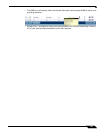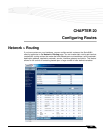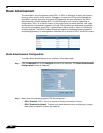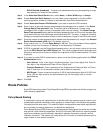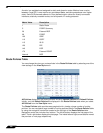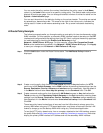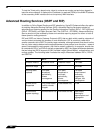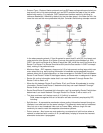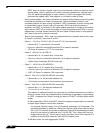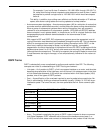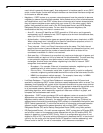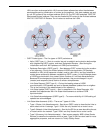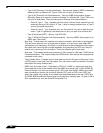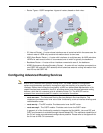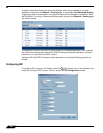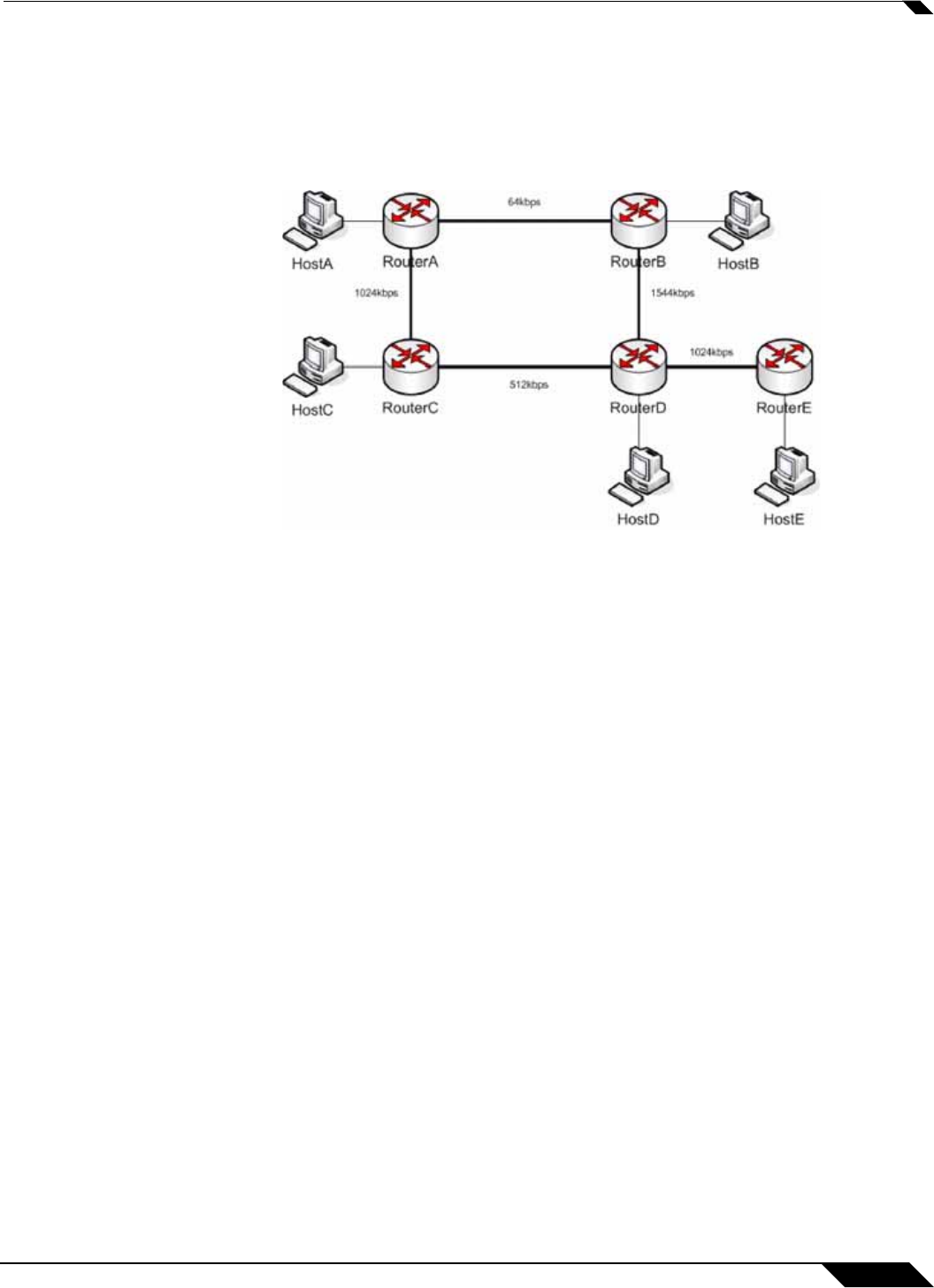
Network > Routing
231
SonicOS Enhanced 4.0 Administrator Guide
• Protocol Type – Distance Vector protocols such as RIP base routing metrics exclusively on
hop counts, while Link state protocols such as OSPF consider the state of the link when
determining metrics. For example, OSPF determines interface metrics by dividing its
reference bandwidth (100mbits by default) by the interface speed – the faster the link, the
lower the cost and the more preferable the path. Consider the following example network:
In the above sample network, if Host A wanted to reach Host B, with RIP, the lowest cost
route would be from Router A to Router B, across the relatively slow 64kbps link. With
OSPF, the cost from Router A to Router B would be 1562, while the cost from Router A to
Router C to Router D to Router B would be 364 (see the Cost section in OSPF concepts
later), making it the preferred route.
• Maximum Hops – RIP imposes a hop count of 15 to help prevent routing loops which can
occur when bad (e.g. stale) routing information is broadcast and propagated through a
network either due to misconfiguration, or slow convergence. Consider if the link between
Router D and Router E failed in the diagram above, and there were no safeguards in place:
• Router A’s routing information states that it can reach Network E through Router B or
Router C with a metric of 3.
• When the link between Router D and Router E fail, and Router A broadcasts its routing
information, Router B and Router C determine that they can reach Network E through
Router A with a metric of 4.
• Router B and Router C broadcast this information, and it is received by Router D which then
determines it can reach Network E through Router B or Router C with a metric of 5.
• This loop continues until the hop count of 16 (infinity) is reached.
Other measures against this sort of situation are also commonly employed by RIP,
including:
• Split-Horizon – A preventative mechanism where routing information learned through an
interface is not sent back out the same interface. This generally works well on broadcast
links, but not on non-broadcast links such as Frame Relay, where a single link can
commonly be used to reach two separate autonomous systems.
• Poison reverse – Also known as route poisoning, an extension of split-horizon where a
network is advertised with a metric of 16 (unreachable), helping to ensure that incorrect
alternative routes aren’t propagated.



